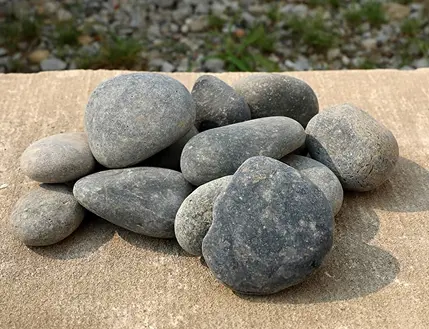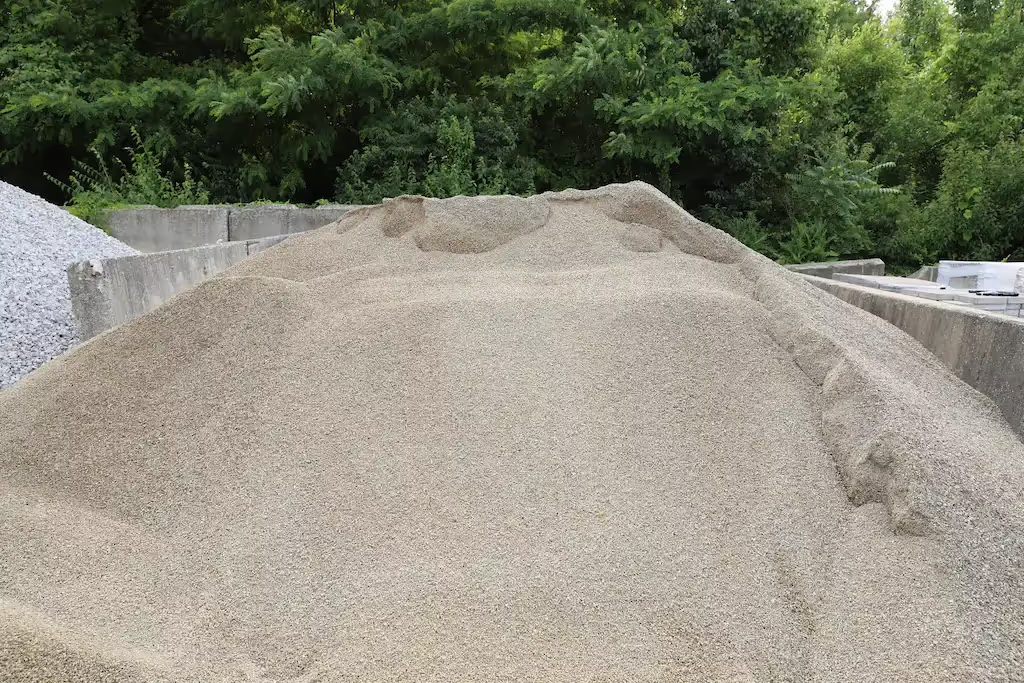- Stone Center
Gravel Calculator

Gravel Calculator
Welcome to the Gravel Calculator, your go-to tool for precisely determining how much gravel you need for any project. Whether it's for landscaping, construction, or gardening, our calculator simplifies the process, giving you accurate measurements in cubic yards or feet. Quickly figure out the required volume of pea gravel, crushed stone, or other types, ensuring your project has the perfect foundation with the right amount of gravel.
Other Calculators
Calculating How Much Gravel Do You Need
Determining the amount of gravel needed for various projects can be straightforward with the right approach. Follow these simple steps to calculate the required gravel for different types of areas:
Step 1: Measure and Calculate Volume
To accurately determine how much gravel is needed, start by calculating the volume of your project area. Begin by measuring the area (length * width) and the depth of the space. For a standard gravel layer, a depth between 2 and 4 inches is typical. Convert these measurements into feet for consistency, dividing the inch values by 12:
- 2 inches deep = 0.17 feet
- 3 inches deep = 0.25 feet
- 4 inches deep = 0.33 feet
The method to calculate volume varies based on the shape of the project area.
Calculating Volume of a Square or Rectangular Space:
Simply multiply the length, width, and depth. For instance, if you have a garden path that is 30 feet long, 10 feet wide, and you want a gravel depth of 2 inches (0.17 feet), your calculation would be:
30 feet 10 feet 0.17 feet = 51 cubic feet in volume
Calculating Volume of a Triangular Space:
Triangular space calculations require measuring one side of the triangle (the base) and the height, which is the perpendicular line from the base to the opposite vertex. To find the volume, multiply the base and height, divide by 2, and then multiply by your depth.
For example, for a triangular flower bed with a 15-foot base and a 10-foot height, and a desired depth of 3 inches (0.25 feet), the calculation is:
[(15 feet 10 feet) / 2] 0.25 feet = 18.75 cubic feet in volume
Calculating Volume of a Circular Space:
For circular spaces, measure the diameter (a straight line through the circle's center). To find the volume, use this formula:
[3.14x (diameter / 2) ^ 2] x depth
Suppose you have a circular pond with a 25-foot diameter and want a gravel layer 4 inches (0.33 feet) deep. The calculation is:
[3.14x (25 feet / 2) ^ 2] x0.33 feet = approximately 135.3 cubic feet in volume
Step 2: Convert to Cubic Yards
Gravel is often sold by the cubic yard, so you'll need to convert your measurements from cubic feet to cubic yards. Divide the cubic feet value by 27. For instance, in the circular pond example, you'd need:
135.3 cubic feet / 27 = approximately 5.01 cubic yards of gravel
Step 3: Convert to Tons
Finally, convert your measurement to tons, which is another common way suppliers sell gravel. The conversion requires knowing the gravel's density; a standard value of 2,835 lbs per cubic yard is typically used.
Thus, 1 cubic yard equals approximately 1.42 tons. For the circular pond example, this means:
5.01 cubic yards x1.42 tons/cubic yard = approximately 7.11 tons of gravel needed
Our Gravel Calculator streamlines these calculations, especially for complex shapes like triangles and circles. Input your measurements, and the calculator will add an extra 10% to cover any waste, ensuring you have sufficient material for your project.
Gravel Coverage
Understanding how much area a certain amount of gravel can cover is crucial for any project. The coverage depends on the depth of the gravel layer you plan to lay. Here's a simple guide to help you estimate the coverage for different amounts of gravel:
Note: The weight in tons is an approximation, assuming a standard density of gravel at about 1.4 tons per cubic yard. The actual weight can vary based on the type of gravel used. This column helps in understanding the total weight of gravel needed for transport and handling purposes.
Types of Gravel
Gravel comes in an array of types, each suited for different uses and aesthetics. Understanding these varieties can help you select the perfect gravel for your project. Here's a brief overview of some common gravel types:
FAQ
How Much Will 1 Ton of Gravel Cover?
The cost for cutting stone depends on the scope of the project and the stone’s application. We can only provide an accurate quote once we understand the specifications of your project. Contact us here to find out more.The coverage of 1 ton of gravel can vary depending on the depth of the layer and the type of gravel used. As a general guide, one ton of gravel typically covers approximately:
- 100 square feet at a 2-inch depth.
- 80 square feet at a 3-inch depth.
- 60 square feet at a 4-inch depth. These are rough estimates and can change slightly based on the size and type of gravel.
How Much is a Cubic Yard of Gravel?
The cost of a cubic yard of gravel depends on the type of gravel and your location. On average, the price can range from:
- $15 to $75 for plain pea gravel or limestone.
- $20 to $100 for colored gravel or decorative stones.
- Prices for specialized gravel like marble chips or river rocks can be higher. Keep in mind that delivery charges, if applicable, can add to the total cost.
How Many Square Feet Does One Ton of Gravel Cover?
One ton of gravel covers an area depending on the depth of application. Typically:
- At a 2-inch depth, one ton of gravel can cover about 100 square feet.
- At a 3-inch depth, it covers around 80 square feet.
- At a 4-inch depth, it covers about 60 square feet. This can vary slightly based on the gravel type and its specific density.





.webp)
.webp)



.avif)
.avif)
.avif)